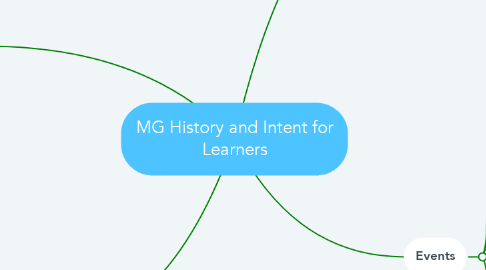
1. Teaching and Learning Components
1.1. Teaming
1.1.1. The most vital aspect of middle school structural design and an identifying feature of true middle schools.
1.1.2. Teams of teachers meet to plan curriculum and create learning communities with teachers and students.
1.1.3. Builds close human relationships between teachers and students. Includes support for one another, camaraderie, working together toward a similar goal, and healthy friendships.
1.1.4. Beneficial for both teachers and students.
1.2. Advisory Programs
1.2.1. AMLE says it is important that "each student must have one adult in the school who assumes special responsibility for supporting that student's academic and personal development."
1.3. Flexible Scheduling
1.3.1. Extended periods result in more time for exploratory curriculum and creative and critical thinking.
2. Middle Grades Curriculm
2.1. Exploratory Curriculum
2.1.1. Middle school students need opportunities to ascertain their special interests and engage in activities that broaden their view of the world and themselves.
2.2. Relevant
2.2.1. Students pose and answer questions that are relevant to them.
2.3. Challenging
2.3.1. More than just covering material. Curriculum addresses substantive issues and skills and enables students to take control of their own learning. Allow students to "grapple with and master advanced concepts."
3. Key People
3.1. Dr. William Alexander
3.1.1. The father of middle school. Called for the first "middle school." Said "learning of right answers is not enough."
3.2. Donald Eichhorn
3.2.1. Assistant superintendent in St Clair, Pennsylvania in the 1960s. He was instrumental in creating new middle school structure. He redefined instructional practice, established advisory programs, and developed multi-aged grouping.
3.3. David Hamburg
3.3.1. Chair of the Carnegie Council who called for middle school to change in order to keep up with the new era of adolescents and to give them a chance to fulfill their "youthful promise."
4. Events
4.1. Carnegie Council on Adolescent Development of 1986
4.1.1. Task Force on the Education of Young Adolescents
4.1.1.1. Why were middle schools not meeting the needs of young adolescents?
4.1.1.2. Created 8 recommendations that became the basic guidelines for creating an appropriate educational setting for middle schools.
4.2. Founding of The National Middle School Association
4.2.1. The result of educators growing concern.
4.2.2. Published the first comprehensive position paper "This We Believe" that outlined the role of middle schools need to meet the needs of young adolescents.
4.3. No Child Left Behind
4.3.1. Created specific content standards outlining what students should know after studying designated topics.
4.3.2. Schools were expected to meet a level of "adequate yearly progress."
4.3.3. Affected teacher too. Teachers had to meet qualifications that made them "highly qualified" with heavy does of content knowledge.
4.3.4. Because of NCLB many middle school returned to the factory model. It was like going backwards.
4.3.5. Led to Common Core and teacher evaluation based on student test scores.

